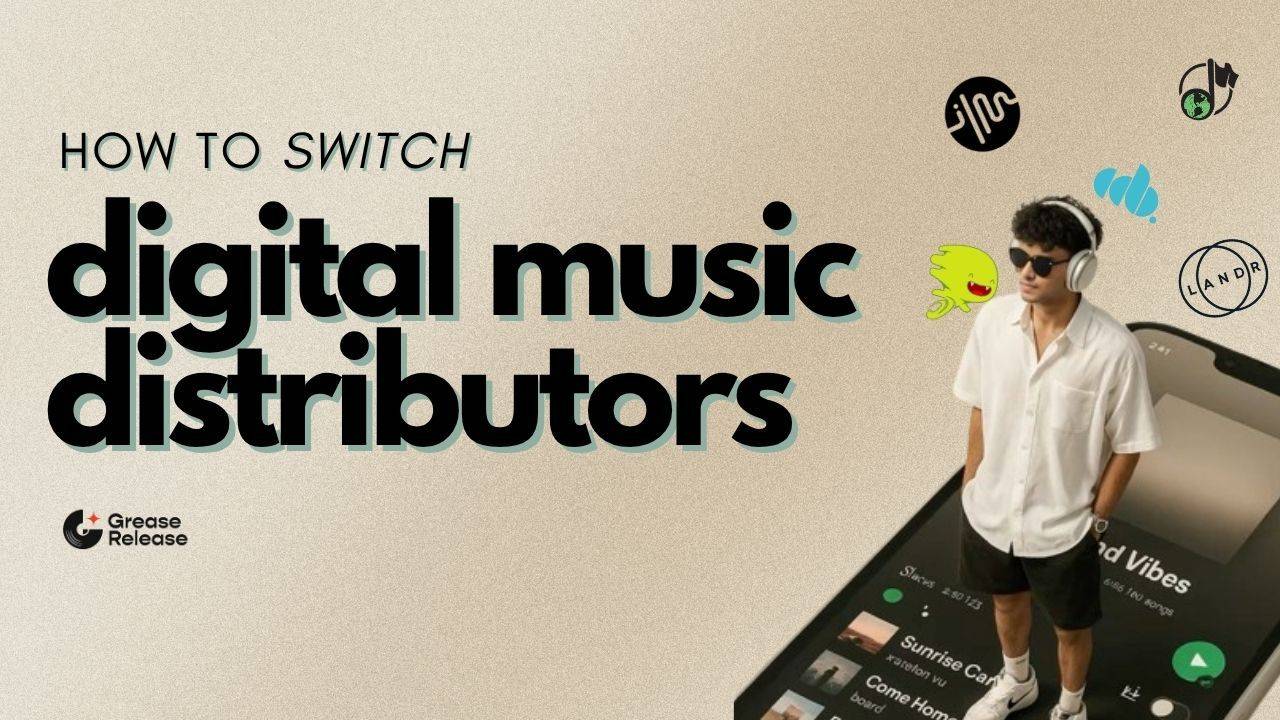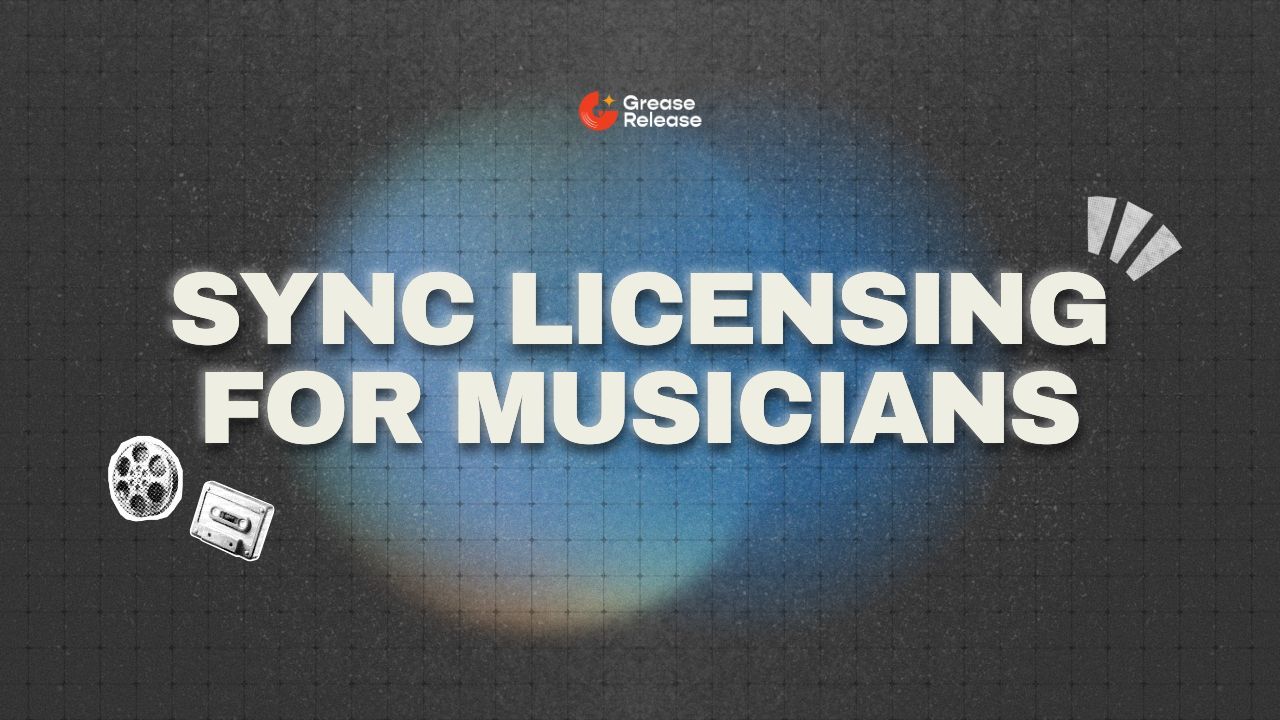
The art of sampling: Music sampling 101
Jul 11, 2025What is sampling in music?
Ever heard a beat that felt brand new, but was built from something old?
That’s the power of sampling music.
From hip-hop to pop, sampling beats has shaped modern sound. It’s way more than just reusing a sample of music. It’s about flipping it into something fresh. And with today’s tools, anyone can start, from bedroom producers to seasoned artists.
In this guide, we’ll break down how to start sampling, where to find samples legally, and how to make your sample music beats sound like your own and much more!
Let’s run it from the top:
- What Is Sampling in Music and Why Do Artists Use It?
- How Sampling Beats Shaped Modern Music Production
- How to Start Sampling Music in Your Own Tracks
- How to Sample Music Legally?
- Tips for Making Sample-Based Music That Sounds Fresh
- FAQs
What Is Sampling in Music and Why Do Artists Use It?
Sampling music isn’t really “copying”, as some people make it to be. It’s one of the most creative tools in modern production. Think of it as a sonic collage: lifting a sample of music from one track and flipping it into something entirely new. That could mean anything from reusing a drum break to looping an old soul riff or chopping up a vocal from a vintage Bollywood track or even the sound of a rusty doorbell!
What actually counts as a sample?
A sample is any pre-recorded sound that’s reused in a new composition. It could be:
- A few seconds of a beat
- A spoken word snippet
- A melody from an older track
- Even ambient noise (a door creak? a microwave beep? yes.)
If you’re pulling existing audio and working it into a new piece, congratulations! You’re sampling.
Why artists love sampling music
Sampling isn’t just about convenience. It’s about storytelling, texture, nostalgia, and vibe. Here’s why artists keep coming back to it:
- Cultural callbacks: Sampling old songs brings emotional weight or familiarity
- Creative limitations: Flipping something existing forces producers to innovate
- Rhythmic or tonal gold: Some grooves from the past just hit differently
- Time-saving (sometimes): Why recreate a drum fill when the perfect one already exists?
In short, sampling music bridges eras, genres, and even audiences. And when done well, it’s magic.
Quick example you’ve definitely heard
You’ve heard Doechii’s “Anxiety” and you’ve also definitely heard of Gotye’s “Somebody that I used to know”. That’s Doechii sampling the beats from Gotye’s iconic song.
It made Doechii’s song an active talking point and gave both artists massive crossover appeal. Win-win.
How Sampling Beats Shaped Modern Music Production
If you're listening to literally any genre today, hip-hop, pop, house, trap, R&B, you’re hearing the influence of sampling beats. It’s not just part of modern music production. It is modern music production to a large extent.
The rise of sampling beats
Let’s rewind to the late ‘70s and early ‘80s. Hip-hop was just getting started, and DJs in the Bronx began isolating the “breaks” from funk and soul records (the parts where everything drops out except drums). Those breaks became the foundation of sampling music as we know it.
As samplers became more accessible, producers started pulling samples of music from vinyl, tapes, and even YouTube rips. They'd chop, reverse, pitch-shift and whatnot, turning one sound into something completely different.
Genres that use sampling
Hip-hop is the most obvious one. Think J Dilla, DJ Premier, Madlib. But sampling didn’t stop there:
- Pop: Artists like Beyoncé, Taylor Swift and Charlie Puth have used subtle samples for nostalgia and texture
- Electronic: House and EDM producers regularly build tracks from sample music beats
- Lo-fi & Chillhop: Entirely sample-based scenes, full of vintage soul loops and dusty drums
- K-Pop: Yep, even K-Pop producers use global samples to build genre-bending tracks
How to Start Sampling Music in Your Own Tracks
Enough tone-setting. Now you’re ready to dive into sampling music…but opening your DAW and staring at a blank session can feel overwhelming.
Let’s simplify it.
First: What do you need?
You don’t need expensive gear or a fancy record store membership. You just need three things:
- A DAW (Ableton, FL Studio, Logic, you pick your poison)
- A music sampler plugin (your DAW probably has one built in)
- A sound source. Could be an old soul record, a random YouTube clip, or even your smoke detector. Seriously.
Then: Pick your sample and play
Find a sample of music—a loop, a vocal chop, a drum break. Drop it into your sampler. Then get weird with it: slice it up, reverse it, pitch it down, layer drums under it. There’s no rulebook.
This is where the fun begins. Sampling beats isn’t just about copying. It’s about transforming.
Where to find samples (mostly legally)
- Tracklib – actual songs you can legally license
- Splice – royalty-free loops and one-shots
- YouTube + Vinyl – great for digging, but watch the copyright
- Outside world – your voice, your fan’s voice, your washing machine, all sampleable
The point? Start with whatever inspires you. Your first sampled beat might not be a masterpiece. But it will be your music sample.
How to Sample Music Legally? Copyright Rules You Should Know
Sampling music is creative, no doubt. But it can also get legally messy real fast if you’re not careful.
The basic rule of sampling
If you didn’t make it, you probably need permission!
Any sample of music, even two seconds of a drum loop, belongs to someone. And if your track gets flagged or goes viral without clearance, you could face takedowns, demonetization, or worse… lawsuits!
Yes, even that 3-second flute loop from a 1970s B-side counts.
When do you need clearance for a sample?
- If you're using a recognizable part of a copyrighted track
- If you didn't create the original audio yourself
- If the sample wasn’t pulled from a royalty-free library.
Do you need clearance for "free" samples?
Sites like Splice, Tracklib, and FreeSound offer pre-cleared or royalty-free options. But always read the fine print. Some require credit, some have limits on usage.
Pro tip: Even if you flip a sample beyond recognition, it’s still safest to clear it especially if you plan to monetize or release through a label.
Sampling beats is an art. But it’s also a business. Don’t skip the paperwork.
Tips for Making Sample-Based Music That Sounds Fresh
Let’s be real: not every sampled beat needs to sound like a chopped-up J Dilla loop from 2003 (you do you tho!)
The key is making your sample-based music feel like you and not just reheating the nachos of something that has worked in the past.
So how do you keep it fresh?
1. Flip it, don’t just loop it
Find a sample of music you like, then do something to it. Change the key. Chop it. Reverse it. Layer it with something unexpected like ambient textures or live guitar.
2. Make it yours with contrast
Mix samples with your original vocals, synths, or recorded elements. That blend of borrowed and built creates something new.
3. Less is more
Don’t overload the track with 20 samples. One well-placed loop can carry a whole vibe, if you give it space.
4. Use effects creatively
Pitch-shifting, filtering, time-stretching. All of these can disguise and re-contextualize even the most obvious sample.
Quick example
Listen to "Hotline Bling" by Drake? That dreamy intro is a looped sample from Timmy Thomas’s 1972 track “Why Can’t We Live Together.”
Minimal flip. Maximum vibe.
Sampling beats isn’t about hiding the past, it’s about bending it to your will.
FAQs
1. Can you sample music legally without paying for it?
Yes, if it’s royalty-free, public domain, or cleared in advance. Sites like Splice or Tracklib are great places to start. But grabbing a random music sample off YouTube without clearance? Risky business. 0/10 would not recommend!
2. What’s the difference between a music sampler and a synth?
A music sampler plays back existing recordings (like vocals, drum loops, or weird cat meows). A synth generates sound from scratch using oscillators.
3. What are some famous songs that use music sampling?
- The Winstons – “Amen Brother” → N.W.A – “Straight Outta Compton”
(The iconic “Amen Break” drum loop that shaped hip-hop, jungle, and DnB) - Gil Scott-Heron – “We Almost Lost Detroit” → Kanye West – “My Way Home”
(Used to add social commentary and narrative texture) - Gnarls Barkley – “Crazy”
(samples melody from Gian Franco & Gian Piero Reverberi – “Nel Cimitero di Tucson”) - Pink Floyd – “Money”
(uses cash registers, coins, and paper tearing as rhythm) - Gotye – "Somebody That I Used To Know" → Doechii – "Anxiety"
Final Thoughts
The art of sampling music is less about stealing sounds and more about flipping them into something new. It’s history, innovation, and creativity rolled into one.
From a dusty sample of music to a fully-produced banger, the possibilities are endless. You just need the right tools, a little taste, and a whole lot of curiosity.
So go crate-digging. Go crazy with your sampler. And remember: some of the greatest tracks ever made started with a borrowed idea and a bold flip.
Now get out there and make something that you’re proud of!
We at GreaseRelease, have a bunch of curators on our network who are looking for new & exciting music to push on their massive playlists. If you make music and want to reach a wider audience, check out our submission platform and get a chance to reach millions of listeners! Submit your tracks now!
Don't miss my newsletter!
Join me on a music entrepreneurship journey with new tips and tricks delivered straight to your inbox.
We hate SPAM. We will never sell your information, for any reason.




